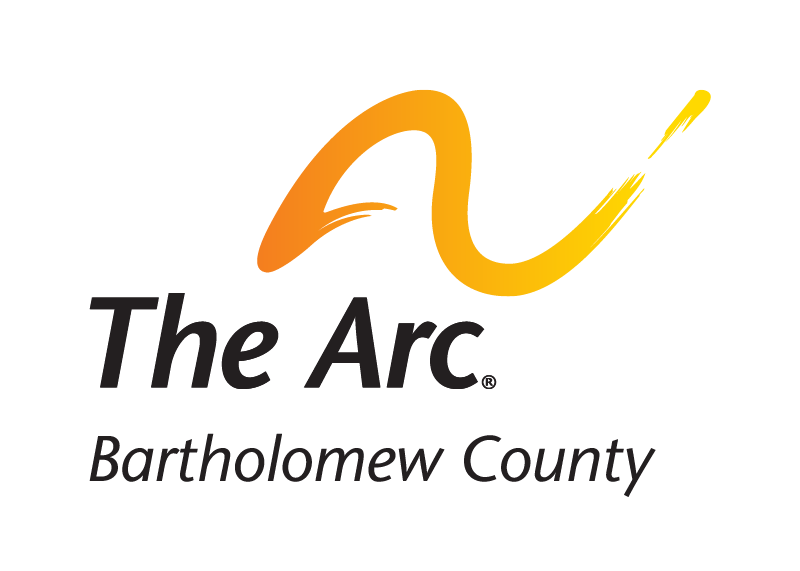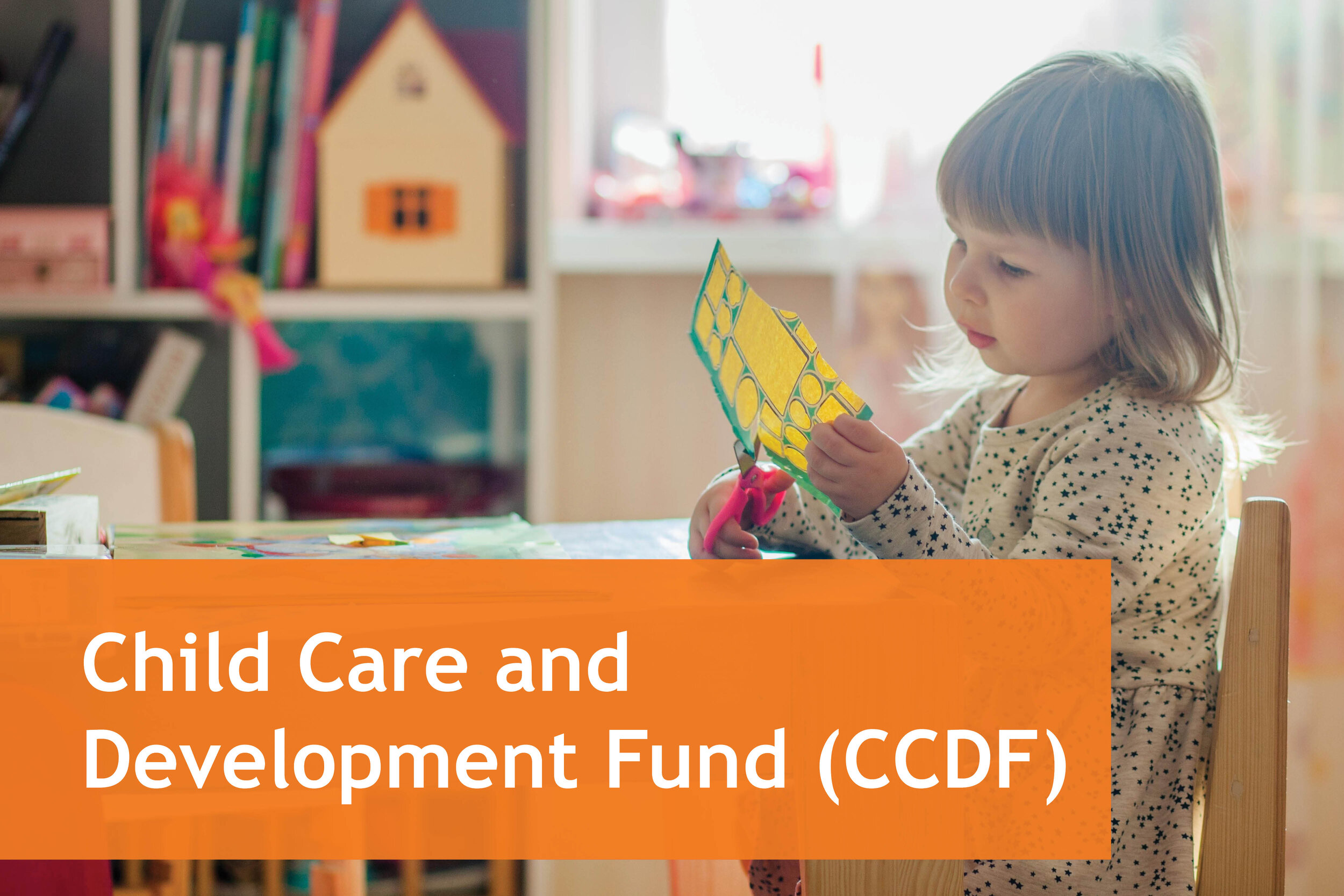Child Care and Development Fund (CCDF)
The Child Care and Development Fund (CCDF) helps low-income families afford high-quality child care with a sliding fee scale based on the family's income.
Program Description
The Family and Social Services Administration (FSSA) Office of Early Childhood and Out-of-School Learning (OECOSL) runs a federal program known as the Child Care and Development Fund (CCDF). The fund provides low-income families money to pay for child care from birth to age 13. In certain circumstances, eligibility can be extended up to age 18 if a child has special needs.
Eligible families over a certain income level (100% of the Federal Poverty Level (FPL)) are required to pay a portion of the child care expenses in the form of a (usually) weekly co-payment. The calculation of the co-payment amount is dependent on the family’s income and is described in the Understanding Reimbursement Rates and Co-Payments section.
Applying Online for Child Care and Development Fund (CCDF)
The Family and Social Services Administration (FSSA) maintains an online application portal called Early Ed Connect which families can use to apply for the Child Care and Development Fund (CCDF) and On My Way Pre-K (OMWPK) programs.
Service Need Requirement
One requirement of the program involves the verification that the family actually needs child care. If one parent in a two-parent household does not work, for example, then it is assumed that the non-working parent would be able to provide child care.
To be eligible the caretaker of the child must have what’s called a “Service Need.” There are several different ways that a caretaker can meet this requirement: through employment, the pursuit of education or training, a combination of employment and education or training, and verification from the Department of Child Services that child care is needed outside of the caretaker’s home.
Additional details relating to each of the Service Need classifications can be found in section 2.7 of the Indiana Child Care and Development Fund (CCDF) Policy and Procedure Manual (pdf).
Special Needs Determination
As defined in section 2 of the Indiana Child Care and Development Fund (CCDF) Policy and Procedure Manual (pdf):
2.5.4 CHILD WITH SPECIAL NEEDS DOCUMENTATION POLICY
Documentation for children with special needs under the age of 13 is required at initial application only. For children ages 13 or over, the required special needs documentation must be an IEP (Individualized Education Plan) or a statement from a health care professional updated at least annually.
Any of the following are appropriate documents to verify a child has a special need:
• Proof of enrollment with Children with Special Health Care Services as provided by the State of Indiana; or
• Proof of enrollment in First Steps Early Intervention System; or
• A copy of the child’s Individualized Education Plan or IEP; or
• Verification of Supplemental Security Income (SSI); or
• Proof of enrollment in Head Start for a child professionally diagnosed with disabilities; or
• Statement from a health care professional which includes the child’s diagnosis.If documentation of enrollment in at least one of the above indicated programs cannot be obtained, the child will not be considered as a child with special needs until the documentation can be provided. Provider and/or Applicants or Co-Applicants cannot self-declare a child has special needs.
Citizenship and Immigration Status
The child’s immigration or citizenship status is relevant for eligibility determination purposes. Often public assistance programs have special rules or considerations for families that have a mix of citizens and non-citizens. With the Child Care and Development Fund (CCDF), the rules are simplified and children can receive benefits regardless of their caretaker’s status.
Financial Eligibility Determination
To be initially considered financially eligible for the program, families must have a gross income below 127% of the Federal Poverty Level (FPL) for their family size. The 127% Federal Poverty Levels (FPL) in 2020 for each family size are as follows:
For a one-person family: $1,350
For a two-person family: $1,825
For a three-person family: $2,299
For a four-person family: $2,775
For a five-person family: $3,247
For a six-person family: $3,721
For a seven-person family: $4,195
Once the family is determined eligible for the program, they’ll remain financially eligible as long as their income is below 85% of the State Median Income (SMI), as published by the Bureau of the Census, for the appropriate family size. The 2020 Indiana State Median Income (SMI) amounts for each month are as follows:
For a one-person family: $2,932
For a two-person family: $3,834
For a three-person family: $4,737
For a four-person family: $5,639
For a five-person family: $6,541
For a six-person family: $7,443
For a seven-person family: $7,612
When a family is determined eligible to receive Child Care and Development Fund (CCDF) funds, payments continue for 12 months regardless of changes to income (while otherwise still eligible for the program). Rules like this allow families to gain or continue employment that would otherwise make them ineligible for Child Care and Development Fund (CCDF) assistance.
Lastly, families must have less than $1 million in assets to remain eligible for the program.
Understanding Reimbursement Rates and Co-Payments
The Child Care and Development Fund (CCDF) provides reimbursements to child care providers based on a sliding scale. This means families with lower incomes won’t have to pay as much as families with higher incomes.
Families whose gross income is above 100% of the Federal Poverty Level (FPL) will be required to make weekly (or bi-weekly) co-payments to the child care provider. Co-payments range from 0% to 26% of the family’s gross income. The difference between the maximum reimbursement rate and the co-payment that families pay is called the child care subsidy. The maximum reimbursement rate is different depending on what type of facility is providing the child care.
For example, a child care center may have a different reimbursement rate than a licensed home that provides child care. These reimbursement rate differences apply even when the child care provider meets the same Paths to QUALITY™ certification level.
The child care provider can charge more than the maximum reimbursement rate. If this occurs, then the extra cost above is referred to as an “overage.” Overages are the responsibility of the child’s caretaker and are not covered by Child Care and Development Fund (CCDF) funds.
Example Co-Payment and Overage Calculation
To understand the co-payment you may be required to pay, you can refer to the Bartholomew County Provider Reimbursement Rate Document (pdf) and the Income Eligibility Determination & Fee Schedule for 2020 (pdf). Once you’ve determined the type of child care facility and your income level based on your family size, you can calculate the co-payment you’ll be required to pay.
For this example, there are two parents and one child in the family, for a family size of three. Let’s assume your family earns an income equal to 105% of the Federal Poverty Level (FPL) which is about $1,900 per month. For the first three years (if your income doesn’t change), you’ll be required to pay 5% of your gross income in co-payments. With a gross income at 105% of the Federal Poverty Level (FPL), you’d pay 5% of $1,900 each month or $95. This would be split into weekly or bi-weekly payments depending on how often you’re paid.
Note: if the child care provider charges more than the maximum reimbursement rate, then you’d also be responsible for the overage. To complete the example, let’s say the child care providers charges $250 per week and the maximum reimbursement rate for that type of child care facility is $244 per week.
In this case, you’d be responsible for the $23 co-payment each week and the $29 overage:
Weekly child care cost of facility: $250
Weekly co-payment based on gross income: $23
Maximum weekly reimbursement rate: $244
Child Care Subsidy Calculation:
$244 maximum reimbursement rate - $23 co-payment = $221 child care subsidy paid to the provider
Overage Calculation:
$250 weekly facility rate - $221 child care subsidy = $29 weekly overage
Total Cost to Family: $23 co-payment + $29 overage = $52 per week
The co-payment amount is required in order to participate in the program and receive the reimbursement. In certain situations, the child care provider may waive the overage amount or otherwise negotiate a lower rate with the child’s caretaker. The Child Care and Development Fund (CCDF) program does not provide services to negotiate the overage, that is the responsibility of the caretaker and the child care provider.
Contact Information for Child Care and Development Fund (CCDF) Intake Agency in Bartholomew County
Children’s Bureau – Columbus, Indiana
Region 14; Serving Bartholomew, Jackson, Jennings, Johnson and Shelby Counties
Contact: Andrea Massey
Website: childrensbureau.org
Address: 1531 13th St., Columbus, IN 47201
Toll-Free: 866-287-2420
Phone: 812-314-2213
Fax: 812-314-2212
Additional Resources
Parent and Guardian Portal for Families receiveind Child Care and Development Fund (CCDF) Services
Code of Federal Regulations - 45 CFR Part 98 - Child Care and Development Fund (CCDF)
Indiana Child Care and Development Fund (CCDF) Policy and Procedure Manual (pdf)
Indiana Child Care and Development Fund (CCDF) Provider Reimbursement Rates

